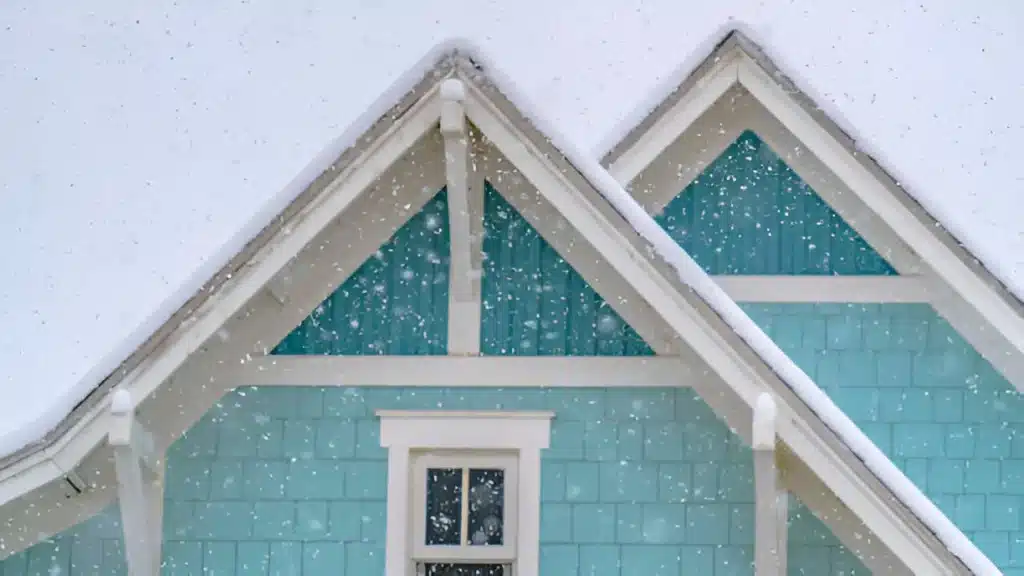Living in a snowy region can be breathtakingly beautiful—sparkling landscapes, cozy nights by the fire, and the magic of falling snow. But the cold months also bring unique challenges to homeowners. From ice dams and frozen pipes to drafty windows and rising heating bills, winter can put your home to the test. That’s why snow-proofing your home is essential. A few smart upgrades and regular maintenance can protect your property, lower your energy costs, and keep your household comfortable throughout the season.
Here are the must-know tips to snow-proof your home and sail smoothly through winter:
1. Insulate to Keep the Heat In
One of the most effective ways to snow-proof your home is by improving insulation. Cold air finds its way in through attics, basements, crawlspaces, and poorly insulated walls.
- Attic insulation: Heat rises, and if your attic isn’t properly insulated, all that warm air escapes. Consider upgrading to blown-in insulation or fiberglass batts with the right R-value for your region.
- Seal gaps: Use spray foam or caulk to seal gaps around pipes, vents, and electrical wiring that enter or exit your home.
- Door sweeps and weather stripping: These small additions help prevent chilly drafts from sneaking in around doors and windows.
2. Prevent Frozen Pipes
Frozen pipes can burst and cause costly water damage. The key is prevention.
- Insulate exposed pipes: Focus on pipes in unheated areas like garages, basements, and attics. Foam pipe sleeves or heating cables can help.
- Keep a trickle running: During extreme cold, let faucets drip slightly to keep water moving.
- Open cabinet doors: This allows warm air to circulate around pipes under sinks, especially on exterior walls.
3. Roof and Gutter Maintenance
Snow and ice buildup can lead to serious roof problems if you don’t take preventative steps. Proper maintenance is key to avoiding costly repairs.
- Keep gutters and downspouts clear: Clogged gutters can contribute to the formation of ice dams—thick, frozen ridges that prevent melting snow from draining properly. This trapped water can back up under shingles and cause leaks inside your home. To prevent such issues and maintain overall exterior cleanliness, many homeowners turn to power washing companies for thorough seasonal maintenance.
- Use a roof rake after heavy snowfalls: Removing excess snow helps reduce stress on your roof structure and minimizes the risk of ice dam formation, especially along the eaves.
- Inspect shingles and flashing early: Before winter sets in, examine your roof for any loose or damaged shingles and deteriorating flashing. Repairing these issues in advance will help prevent leaks during snowmelt.
- Install snow guards on metal roofs: If you have a metal roof, consider adding snow guards to prevent large sheets of snow and ice from sliding off suddenly. These guards help distribute snow evenly, reducing the risk of damage to gutters, landscaping, and anyone walking below.
4. Check Your Heating System
Your heating system is your lifeline during the winter. Make sure it’s ready to perform.
- Schedule a furnace inspection: Have a professional tune-up your furnace or boiler annually.
- Replace filters: Dirty filters reduce efficiency and air quality. Replace or clean them monthly during heavy use.
- Bleed radiators: If you use radiators, bleeding them removes trapped air and helps heat circulate properly.
5. Upgrade to Energy-Efficient Windows
Windows can be a major source of heat loss.
- Install storm windows or double-pane glass: These options create a buffer against the cold.
- Apply window insulation film: An affordable way to add an extra layer of insulation.
- Use thermal curtains: Close them at night to trap warmth and open during sunny days to let in natural heat.
6. Stock Up on Essentials
Being prepared for snowstorms or power outages can make winter less stressful.
- Emergency kit: Include flashlights, batteries, blankets, bottled water, and non-perishable food.
- Snow removal tools: Have shovels, salt, and a snowblower on hand.
- Backup heat source: A wood-burning stove or portable space heater can be a lifesaver if your main heating system fails.
7. Ventilate Properly
It may sound counterintuitive, but a well-ventilated home is crucial in the winter.
- Use exhaust fans: Run fans in kitchens and bathrooms to reduce humidity that can cause condensation and mold.
- Attic ventilation: Allows cold air to circulate and reduces the risk of ice dams forming on the roof.
8. Protect Your Entryways
Your home’s entrances bear the brunt of snow, salt, and moisture.
- Place heavy-duty mats: Inside and outside each door to catch snow and slush.
- Install a mudroom or shoe rack: Keeps wet boots and coats contained and prevents water damage to floors.
Final Thoughts
Snow-proofing your home doesn’t have to be overwhelming. With the right preparation and a focus on insulation, heating, and maintenance, you can enjoy winter without worrying about surprise repairs or skyrocketing bills. Whether you’re a long-time cold climate resident or a new arrival to snowy terrain, these proactive tips will help your home stay warm, dry, and energy-efficient all season long.
Bundle up, stay cozy, and let your snow-proofed home be your winter fortress!
Also read-The Best Broad Spectrum CBD Oil in the UK – Calm in a Bottle







